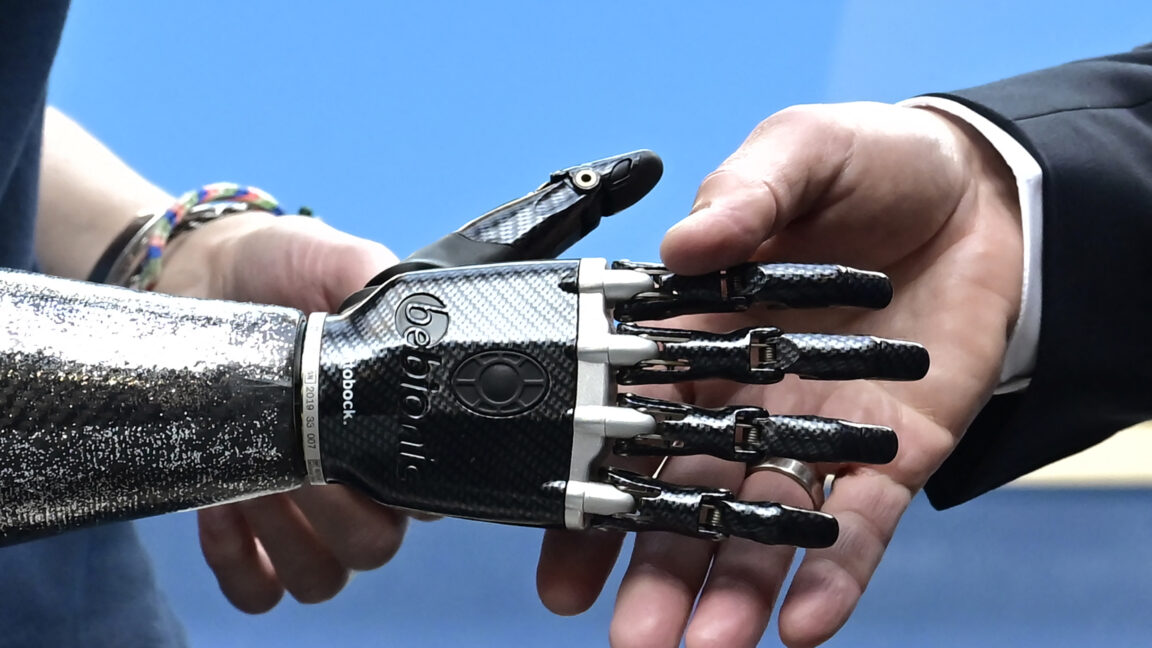Ireland sets out chip plan
uflypro - stock.adobe.com
News
Ireland sets out chip plan
Ireland has a long history of attracting high-tech firms. Building on the EU Chip Act, it now aims to be a leader in semiconductors
By
Cliff Saran,
Managing Editor
Published: 20 May 2025 14:45
The Irish government has unveiled a semiconductor strategy in alignment with the European Chip Act.
Silicon island: A national semiconductor strategy sets out a clear roadmap to grow Ireland’s semiconductor sector by creating high-value jobs, attracting major investment and deepening the country’s leadership in cutting-edge technology as a key player in Europe’s semiconductor future.
The Irish government aims to become a leader in the semiconductor industry by building on its track record in technology development, capitalising on existing strengths and taking proactive, strategic actions to address emerging challenges.
In 2023, the European Unionset out plans to secure the supply of semiconductors and drive chip development across the region. The EU Chip Act commits €43bn of policy-driven investment until 2030, funding a number of initiatives including next-generation technologies and providing access across Europe to design tools and pilot lines for the prototyping, testing and experimentation of cutting-edge chips.
Ireland – which is home to over 130 semiconductor companies, directly employing 20,000 people and generating €13.5bn in annual exports – is building on the EU Chip Act.
The Irish strategy aims to foster the further growth of Ireland’s semiconductor ecosystem over the coming decade in support of the European Chips Act and Digital Decade ambitions through three strategic strands: strengthening the existing ecosystem, ensuring a robust national talent pipeline, and seizing industry opportunities.
Key deliverables include publishing a comprehensive mapping of Ireland’s semiconductor ecosystem, fostering connections between research and innovation clusters, and engaging the education system to meet growing talent demands.
semiconductor stories
EU looks to ramp up sovereign tech as Trump trade war begins: Trump’s trade war is now looking at the EU, with tariffs on steel and aluminium imports. Could US tech be in the firing line?
The challenges of securing a UK semiconductor supply chain: The UK’s national semiconductor strategy aims to establish the country's credentials as a leader in the sector. We look at how it stacks up.
Speaking at the launch, minister for enterprise, tourism and employment Peter Burke said: “Ireland already has a strong semiconductor base. But with the right support, I believe we could do far more. By 2040, Ireland could support up to 34,500 new semiconductor roles.”
The overall goal of the Irish chip strategy is to ensure there is a secure supply chain for semiconductors in Europe by building on Ireland’s already well-established semiconductor footprint.
Integrated device manufacturers including Intel, Analog Devices and Infineon have facilities in Ireland. Fabless manufacturers including Apple, AMD and IBM also have sites in Ireland, as do firms like ARM, AutoCAD and Siemens, which provide chip design, and design and testing software for chipmakers. Photolithography equipment manufacturer ASML also has an Irish facility.
The multi-faceted strategy involves securing major industrial investments, with ambitious plans to establish a leading-edge chip fabrication facility, two trailing-edge foundries and an advanced packaging facility.
Ireland also aims to develop next-generation sites with the infrastructure needed to support large-scale manufacturing and support startups and spinouts with access to finance.
The Irish government also aims to enhance research and development, by supporting both indigenous innovation and multinational collaboration and fostering an open ecosystem based on collaboration. Overall, it wants to ensure Ireland is regarded as a hub of excellence in semiconductor design, manufacturing and research.
Ireland has established a national competence centre for semiconductors under the European Chips Act. It has also collaborated with Analog Devices and 14 EU member states as part of the EU’s €8.0bn Important Projects of Common European Interests initiative to support microelectronics and communications.
In The Current Issue:
UK critical systems at risk from ‘digital divide’ created by AI threats
UK at risk of Russian cyber and physical attacks as Ukraine seeks peace deal
Standard Chartered grounds AI ambitions in data governance
Download Current Issue
Starburst chews into the fruits of agentic
– CW Developer Network
Calm settles over digital identity market - for now...– Computer Weekly Editors Blog
View All Blogs
#ireland #sets #out #chip #plan
Ireland sets out chip plan
uflypro - stock.adobe.com
News
Ireland sets out chip plan
Ireland has a long history of attracting high-tech firms. Building on the EU Chip Act, it now aims to be a leader in semiconductors
By
Cliff Saran,
Managing Editor
Published: 20 May 2025 14:45
The Irish government has unveiled a semiconductor strategy in alignment with the European Chip Act.
Silicon island: A national semiconductor strategy sets out a clear roadmap to grow Ireland’s semiconductor sector by creating high-value jobs, attracting major investment and deepening the country’s leadership in cutting-edge technology as a key player in Europe’s semiconductor future.
The Irish government aims to become a leader in the semiconductor industry by building on its track record in technology development, capitalising on existing strengths and taking proactive, strategic actions to address emerging challenges.
In 2023, the European Unionset out plans to secure the supply of semiconductors and drive chip development across the region. The EU Chip Act commits €43bn of policy-driven investment until 2030, funding a number of initiatives including next-generation technologies and providing access across Europe to design tools and pilot lines for the prototyping, testing and experimentation of cutting-edge chips.
Ireland – which is home to over 130 semiconductor companies, directly employing 20,000 people and generating €13.5bn in annual exports – is building on the EU Chip Act.
The Irish strategy aims to foster the further growth of Ireland’s semiconductor ecosystem over the coming decade in support of the European Chips Act and Digital Decade ambitions through three strategic strands: strengthening the existing ecosystem, ensuring a robust national talent pipeline, and seizing industry opportunities.
Key deliverables include publishing a comprehensive mapping of Ireland’s semiconductor ecosystem, fostering connections between research and innovation clusters, and engaging the education system to meet growing talent demands.
semiconductor stories
EU looks to ramp up sovereign tech as Trump trade war begins: Trump’s trade war is now looking at the EU, with tariffs on steel and aluminium imports. Could US tech be in the firing line?
The challenges of securing a UK semiconductor supply chain: The UK’s national semiconductor strategy aims to establish the country's credentials as a leader in the sector. We look at how it stacks up.
Speaking at the launch, minister for enterprise, tourism and employment Peter Burke said: “Ireland already has a strong semiconductor base. But with the right support, I believe we could do far more. By 2040, Ireland could support up to 34,500 new semiconductor roles.”
The overall goal of the Irish chip strategy is to ensure there is a secure supply chain for semiconductors in Europe by building on Ireland’s already well-established semiconductor footprint.
Integrated device manufacturers including Intel, Analog Devices and Infineon have facilities in Ireland. Fabless manufacturers including Apple, AMD and IBM also have sites in Ireland, as do firms like ARM, AutoCAD and Siemens, which provide chip design, and design and testing software for chipmakers. Photolithography equipment manufacturer ASML also has an Irish facility.
The multi-faceted strategy involves securing major industrial investments, with ambitious plans to establish a leading-edge chip fabrication facility, two trailing-edge foundries and an advanced packaging facility.
Ireland also aims to develop next-generation sites with the infrastructure needed to support large-scale manufacturing and support startups and spinouts with access to finance.
The Irish government also aims to enhance research and development, by supporting both indigenous innovation and multinational collaboration and fostering an open ecosystem based on collaboration. Overall, it wants to ensure Ireland is regarded as a hub of excellence in semiconductor design, manufacturing and research.
Ireland has established a national competence centre for semiconductors under the European Chips Act. It has also collaborated with Analog Devices and 14 EU member states as part of the EU’s €8.0bn Important Projects of Common European Interests initiative to support microelectronics and communications.
In The Current Issue:
UK critical systems at risk from ‘digital divide’ created by AI threats
UK at risk of Russian cyber and physical attacks as Ukraine seeks peace deal
Standard Chartered grounds AI ambitions in data governance
Download Current Issue
Starburst chews into the fruits of agentic
– CW Developer Network
Calm settles over digital identity market - for now...– Computer Weekly Editors Blog
View All Blogs
#ireland #sets #out #chip #plan
0 Commenti
·0 condivisioni
·0 Anteprima











